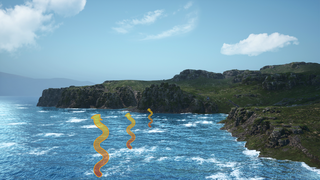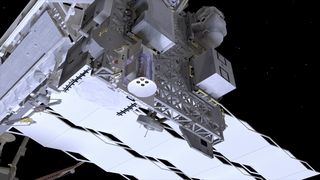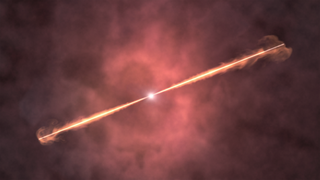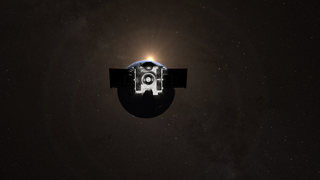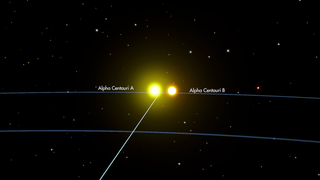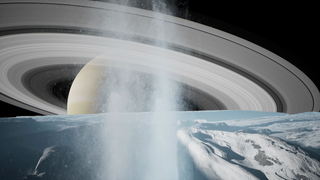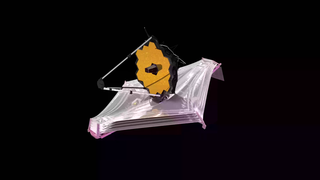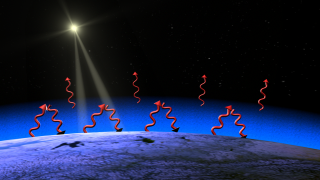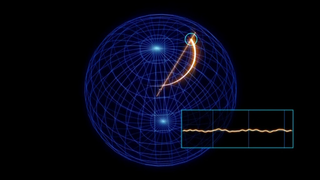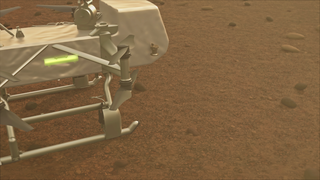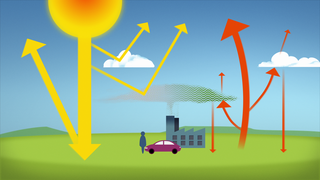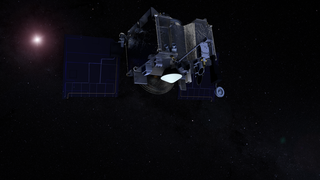Earth
ID: 20016
The Water Cycle - Water falling from summer storm clouds onto a field of wheat today will someday fall again somewhere else. This is the essence of the water cycle. The first step in the cycle is evaporation. Heated by sunlight, liquid water turns to vapor and enters the atmosphere. Another source of atmospheric water vapor is the respiratory process of plants. Vapor leaves plants through tiny pores called stomata. This process is called transpiration. As moist air ascends into the atmosphere and encounters lower atmospheric pressure, the invisible water vapor transforms back into liquid water, and we see the next phase in the water cycle: condensation. Droplets of water coalesce from traces of vapor, and as they gain size by joining with other droplets, they yield the next part of the water cycle. This is called precipitation. The cycle is endless. As it's name suggests, the Aqua project will be intensely involved in studying the water cycle in its many forms.
Evaporation - Depending on total ambient temperature, relative humidity, wind speed, and water temperature, some molecules of water are almost always passing from liquid to gaseous state at the surface. This is called evaporation. Evaporation is what puts moisture into the air, pulling water off the surface of lakes and streams and topsoil. Not only does water vapor enter the atmosphere, but also evaporating water pulls heat away from the surface. That heat will get redistributed to a different part of the atmosphere when the recently liberated water vapor re-condenses.
Transpiration - Related to evaporation, this is the respiratory equivalent of breathing in plants. Transpiration is how plants lose water to the surrounding air. While some water directly evaporates through the walls of cells on the surface of plants, the majority of water lost happens through intercellular structures called stomata. These are like tiny pores. Transpiration helps pull nutrients from plant roots up to leaves. It's a natural process that's heavily influenced by ambient temperature, humidity, and other factors. Additionally, transpiration also helps properly circulate carbon dioxide and oxygen, diffusing the first into plant cells for growth, and carrying the second away from cells as waste gas.
Condensation - The process that describes the change in physical state of a gas to a liquid is called condensation. Generally this is a phenomenon brought about by either of two processes: cooling of air to its dewpoint, or the addition of enough water vapor to bring the air to the point of saturation. But as that moisture either reaches high enough altitudes so that the air containing it is chilled by lower temperatures found there, or affected by increasing humidity from dynamic meteorological conditions, it condenses. The water molecules start moving more slowly, and the state of matter begins to change, as water molecules start hooking up. Gas becomes a liquid. Condensation can take many forms without necessarily falling from the sky. Dew, fog, mist, and clouds are all examples of condensed water.
Precipitation - Simply speaking, precipitation is a function of water changing its material state from vapor to a liquid or a solid. But more specifically, two fundamental steps must take place for water to fall from the sky. The first is that basic precipitation components must develop. These include ice crystals that form around various minute particles in the atmosphere such as dust or salts. The second step is for those ice crystals or condensed droplets to grow. Because of their increasing size, larger droplets or ice crystals are more apt to collide with other particles of water, and thus more likely to fall or 'precipitate' out of a cloud.
Aqua Mission Science Objectives
Evaporation - Depending on total ambient temperature, relative humidity, wind speed, and water temperature, some molecules of water are almost always passing from liquid to gaseous state at the surface. This is called evaporation. Evaporation is what puts moisture into the air, pulling water off the surface of lakes and streams and topsoil. Not only does water vapor enter the atmosphere, but also evaporating water pulls heat away from the surface. That heat will get redistributed to a different part of the atmosphere when the recently liberated water vapor re-condenses.
Transpiration - Related to evaporation, this is the respiratory equivalent of breathing in plants. Transpiration is how plants lose water to the surrounding air. While some water directly evaporates through the walls of cells on the surface of plants, the majority of water lost happens through intercellular structures called stomata. These are like tiny pores. Transpiration helps pull nutrients from plant roots up to leaves. It's a natural process that's heavily influenced by ambient temperature, humidity, and other factors. Additionally, transpiration also helps properly circulate carbon dioxide and oxygen, diffusing the first into plant cells for growth, and carrying the second away from cells as waste gas.
Condensation - The process that describes the change in physical state of a gas to a liquid is called condensation. Generally this is a phenomenon brought about by either of two processes: cooling of air to its dewpoint, or the addition of enough water vapor to bring the air to the point of saturation. But as that moisture either reaches high enough altitudes so that the air containing it is chilled by lower temperatures found there, or affected by increasing humidity from dynamic meteorological conditions, it condenses. The water molecules start moving more slowly, and the state of matter begins to change, as water molecules start hooking up. Gas becomes a liquid. Condensation can take many forms without necessarily falling from the sky. Dew, fog, mist, and clouds are all examples of condensed water.
Precipitation - Simply speaking, precipitation is a function of water changing its material state from vapor to a liquid or a solid. But more specifically, two fundamental steps must take place for water to fall from the sky. The first is that basic precipitation components must develop. These include ice crystals that form around various minute particles in the atmosphere such as dust or salts. The second step is for those ice crystals or condensed droplets to grow. Because of their increasing size, larger droplets or ice crystals are more apt to collide with other particles of water, and thus more likely to fall or 'precipitate' out of a cloud.
Animation Credits
Please give credit for this item to:
NASA/Goddard Space Flight Center Conceptual Image Lab
NASA/Goddard Space Flight Center Conceptual Image Lab
Short URL to share this page:
https://svs.gsfc.nasa.gov/20016
Data Used: Note: While we identify the data sets used in these visualizations, we do not store any further details nor the data sets themselves on our site.
Goddard TV Tape:
G2002-017
Keywords:
SVS >> Byrne
SVS >> Condensation
SVS >> Evaporation
SVS >> Gonnelli
SVS >> Transpiration
SVS >> Water Cycle
GCMD >> Earth Science
GCMD >> Earth Science >> Atmosphere >> Precipitation
GCMD >> Earth Science >> Atmosphere >> Precipitation >> Rain
NASA Science >> Earth
GCMD keywords can be found on the Internet with the following citation: Olsen, L.M., G. Major, K. Shein, J. Scialdone, S. Ritz, T. Stevens, M. Morahan, A. Aleman, R. Vogel, S. Leicester, H. Weir, M. Meaux, S. Grebas, C.Solomon, M. Holland, T. Northcutt, R. A. Restrepo, R. Bilodeau, 2013. NASA/Global Change Master Directory (GCMD) Earth Science Keywords. Version 8.0.0.0.0
https://svs.gsfc.nasa.gov/20016
Data Used: Note: While we identify the data sets used in these visualizations, we do not store any further details nor the data sets themselves on our site.
Goddard TV Tape:
G2002-017
Keywords:
SVS >> Byrne
SVS >> Condensation
SVS >> Evaporation
SVS >> Gonnelli
SVS >> Transpiration
SVS >> Water Cycle
GCMD >> Earth Science
GCMD >> Earth Science >> Atmosphere >> Precipitation
GCMD >> Earth Science >> Atmosphere >> Precipitation >> Rain
NASA Science >> Earth
GCMD keywords can be found on the Internet with the following citation: Olsen, L.M., G. Major, K. Shein, J. Scialdone, S. Ritz, T. Stevens, M. Morahan, A. Aleman, R. Vogel, S. Leicester, H. Weir, M. Meaux, S. Grebas, C.Solomon, M. Holland, T. Northcutt, R. A. Restrepo, R. Bilodeau, 2013. NASA/Global Change Master Directory (GCMD) Earth Science Keywords. Version 8.0.0.0.0
